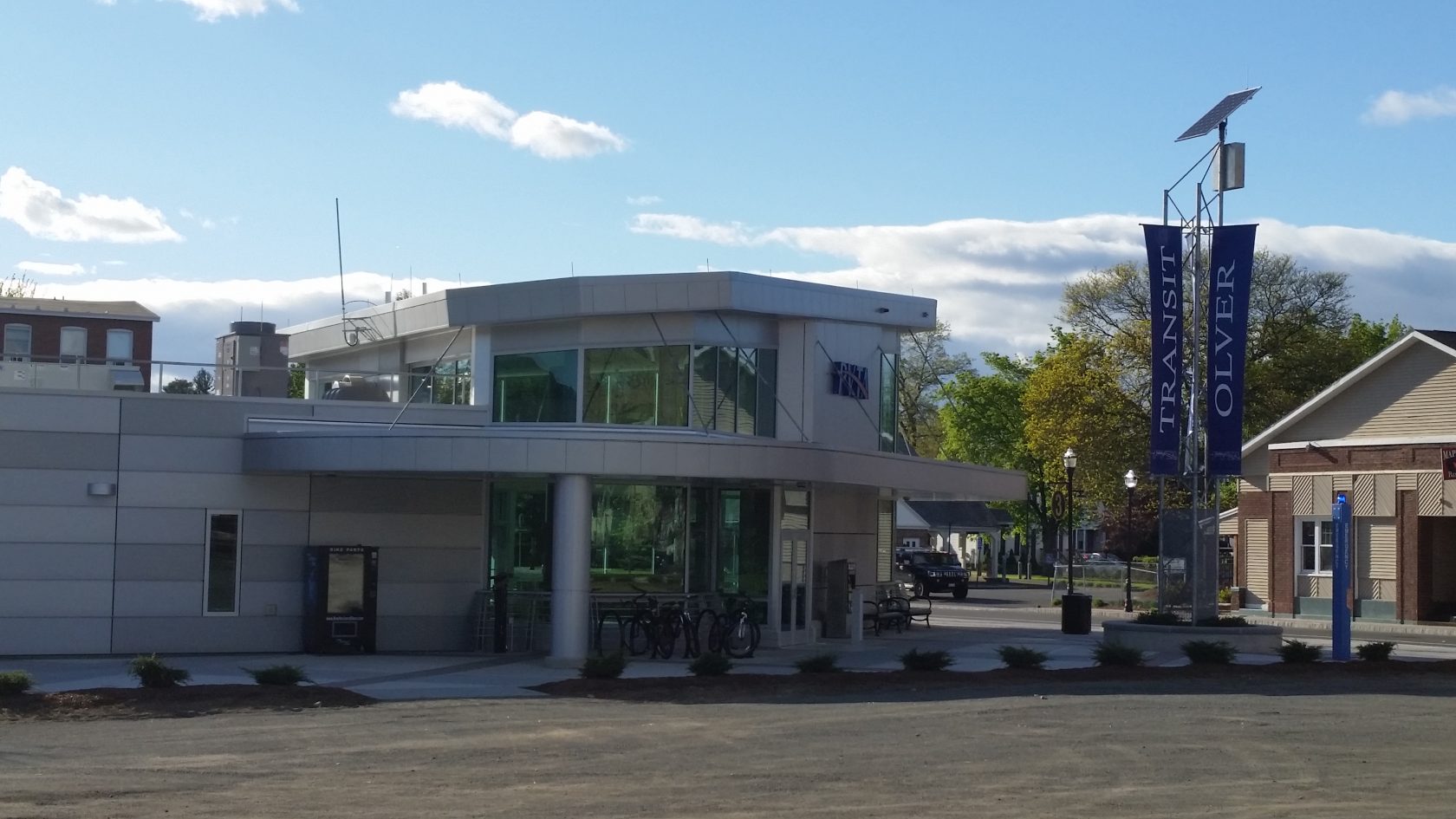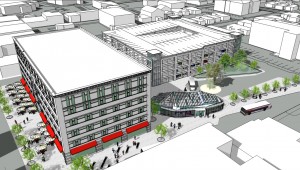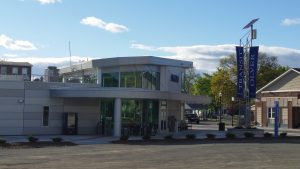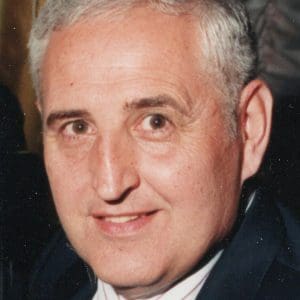WESTFIELD—One of the city’s bigger improvement initiatives that evolved over the past year was the Elm Street Urban Renewal Project in the downtown area.
The project saw a number of steps taken this year, which is helping to change the downtown district. Among the changes to the area have been a new transit pavilion, increased parking and the acquisition and demolition of a vacant building.
In February, the Westfield Redevelopment Authority (WRA) acquired properties on Church Street and Elm Street through the use of eminent domain. The move was done with previously OK’d funds of $509,000 from City Council for the acquisition and some demolition.
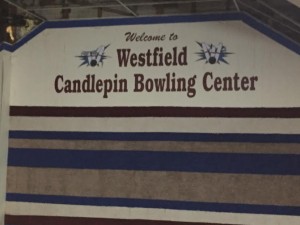
The interior sign of the Romani’s Bowling Alley set for demolition on Church Street, formerly owned by the Romani family. (Photo by Greg Fitzpatrick)
The properties were 0 Church St., 11 to 13 Church St., 56 to 58 Elm St. and 64 to 66 Elm St., which were all unoccupied at the time. Among these properties was the former Romani’s Bowling Alley, which was demolished during the first week of September and now can be used as parking.
The demolition required additional funding from the WRA’s contingency funds after asbestos had to be removed, as well as the removal of a 1,000-gallon underground oil tank at the site. The tank was breached, according to Joe Mitchell, City Advancement Coordinator, and contained oily sediment but was mostly empty.
Following the removal of the tank, Mitchell said that over the past four to six weeks soil testing has been done and water wells were dug for further testing.
In addition, Mitchell said that they have also applied for a technical assistance grant from MassDevelopment, which could be used to assist in the request for proposal of the private construction of a mixed-use building or parking. They are currently awaiting the results.
Also part of the Urban Renewal Plan was the construction of the Pioneer Valley Transit Authority (PVTA) Olver Transit Pavilion, which opened on April 28. The project, in addition to being one of the key developments in the Urban Renewal Plan, also opened several parking spaces in the area.
“The great part about the PVTA piece is something has started there. Now it’s definitely generated a buzz and interest,” Mitchell was quoted as saying in a May 4 article in The Westfield News.
The design, which was PVTA’s decision and was influenced by federal regulations, included curved edges and glass to open it visually, including increased sunshine. This openness also helps defray energy costs, due to the reduction of use in electricity with lighting.
Mitchell said that the WRA, which is a five-person all-volunteer governmental body appointed to three-year terms, with four members appointed by Mayor Brian Sullivan and one by Gov. Charlie Baker, have done a lot of the work needed for the projects.
“It’s not me, its these five people that are the governing body,” Mitchell said.
Their backgrounds are varied, and include real estate, accounting, nonprofit sector and manufacturing.

